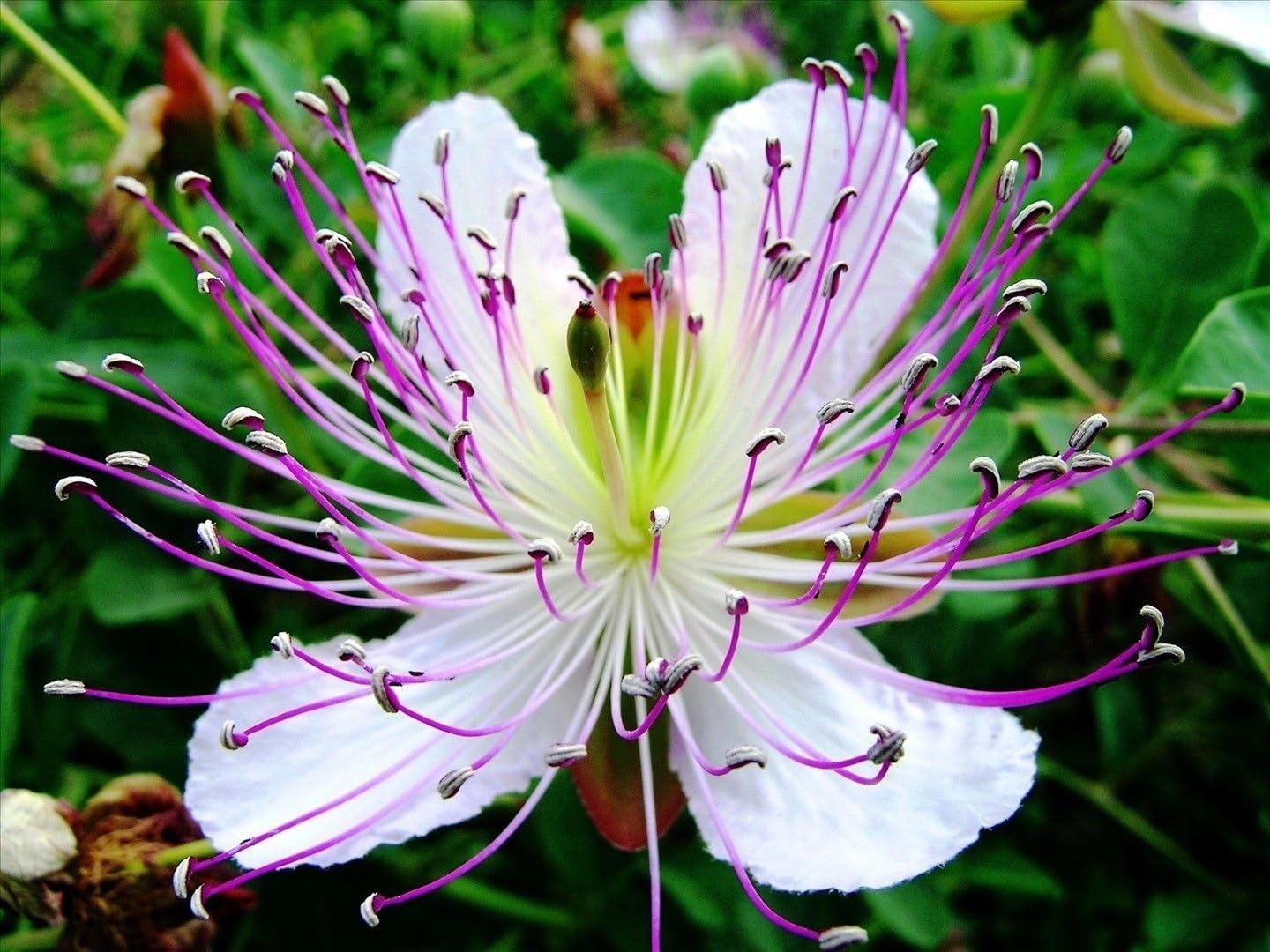
Dharaseeds
Caper Seeds
Estimated Free Delivery between April 16 and April 19.
Secured Payment Methods
Your transaction is protected with advanced security measures to keep your information confidential
Capparis spinosa, commonly known as Caper, is a hardy, perennial shrub that thrives in dry, sunny regions. Known for its small, flavorful flower buds, which are commonly used as a spice in culinary dishes, capers are a staple in Mediterranean and Middle Eastern cuisine. The plant also produces small, edible berries, and both the buds and berries have medicinal uses.
Key Benefits
- Culinary Use: Caper buds are most commonly harvested and pickled for use in cooking. They have a distinctive, tangy, and slightly bitter flavor that enhances many dishes, particularly Mediterranean salads, pasta, and fish recipes.
- Antioxidants: Capers are rich in antioxidants, which help protect the body from oxidative stress and reduce the risk of chronic diseases.
- Digestive Health: Known for their digestive properties, capers can stimulate appetite and improve digestion when consumed as part of a meal.
- Anti-inflammatory: Capers have anti-inflammatory properties, making them useful for alleviating conditions like arthritis or general inflammation in the body.
- Rich in Vitamins: Caper buds are a good source of vitamins A, C, and K, which contribute to healthy skin, immunity, and blood clotting.
Variety Features
- Flowers: Caper plants produce large, showy, white to pale pink flowers with long, purple stamens. These flowers are typically 2–3 inches (5–8 cm) wide and bloom in late spring to early summer.
- Size: Caper plants are relatively compact, typically growing to 2–5 feet (60–150 cm) in height and width. The plant has a sprawling, bushy habit with leathery, oval leaves.
- Fruits: After flowering, the plant produces small, green, berry-like fruits that mature into larger, purple berries. These fruits are edible, but they are not as commonly used as the flower buds.
- Thorns: The plant features sharp thorns along its stems, which should be handled carefully during harvesting.
Planting Instructions
Planting Season
- Best Time to Plant: Caper seeds should be planted in the spring once the threat of frost has passed, as the plant thrives in warm, dry conditions.
- Temperature: Caper plants prefer hot, dry climates and are most successful in USDA hardiness zones 9-11.
Planting Details
- Planting Depth: Sow caper seeds about 1/4 inch (6 mm) deep in well-draining soil.
- Spacing: Space the seeds or seedlings 24 inches (60 cm) apart to allow room for growth and proper air circulation.
- Soil Requirements: Caper plants prefer slightly alkaline, sandy or rocky soil with good drainage. They are drought-tolerant once established, but they do not like waterlogged conditions.
- Sunlight: These plants require full sun to thrive and will struggle in shady conditions. Ensure they receive at least 6-8 hours of sunlight per day.
- Watering: Water sparingly after planting. Caper plants are drought-tolerant once established, but they do require regular watering during their early growth stages to help establish their root systems.
Care Instructions
- Watering: Once the plant is established, it is highly drought-tolerant. Avoid overwatering, as excessive moisture can lead to root rot. During the growing season, water deeply but infrequently, allowing the soil to dry out between waterings.
- Fertilization: Caper plants are not heavy feeders. They can benefit from a light application of compost or organic fertilizer in the spring, but avoid over-fertilizing, as it may encourage excessive foliage growth at the expense of flowers.
- Weeding: Keep the area around the caper plant free of weeds, which can compete for nutrients and moisture.
- Pruning: Prune the plant in late winter or early spring to remove dead or damaged growth. Light pruning throughout the growing season can help shape the plant and encourage new growth.
- Pest Control: Caper plants are relatively pest-resistant, but they can sometimes attract aphids or other insects. Use organic insecticidal soap or neem oil if necessary to manage pests.
Harvesting
- When to Harvest: Caper buds should be harvested before they open, typically when they are small, tight, and firm. The buds can be harvested throughout the growing season, but they are most flavorful when young.
- Harvesting Method: Use pruning shears or scissors to carefully clip the buds from the plant, avoiding damage to the stems and surrounding leaves.
- Storage: After harvesting, caper buds can be pickled in brine or vinegar for preservation. Fresh buds can also be dried and stored for later use.
Storage Tips
- Pickled Capers: Store pickled capers in an airtight container in the refrigerator. They will keep for several months when properly stored.
- Dried Capers: Dried capers should be stored in a cool, dark place in an airtight container. They can be rehydrated before use in cooking.
- Seeds: If saving seeds for future planting, store them in a dry, cool location in an airtight container to maintain their viability.
Medicinal Uses
- Anti-inflammatory: The anti-inflammatory compounds in capers can help alleviate conditions like arthritis, gout, and other joint-related inflammation.
- Digestive Aid: Caper extract or consumption can stimulate digestion, reduce bloating, and act as an appetite stimulant.
- Liver Health: Capers have been traditionally used to support liver function and improve bile production, aiding in the digestion of fats.
Conclusion
Caper (Capparis spinosa) is a hardy, sun-loving plant that produces flavorful, tangy buds often used in Mediterranean cooking. Easy to grow in dry, hot conditions, capers are both an ornamental and culinary delight. With their potential health benefits, including anti-inflammatory properties and digestive support, they are an excellent addition to any herb or Mediterranean garden. Grow your own caper plant, and enjoy the satisfaction of harvesting fresh, home-grown capers for cooking, pickling, or medicinal uses.








